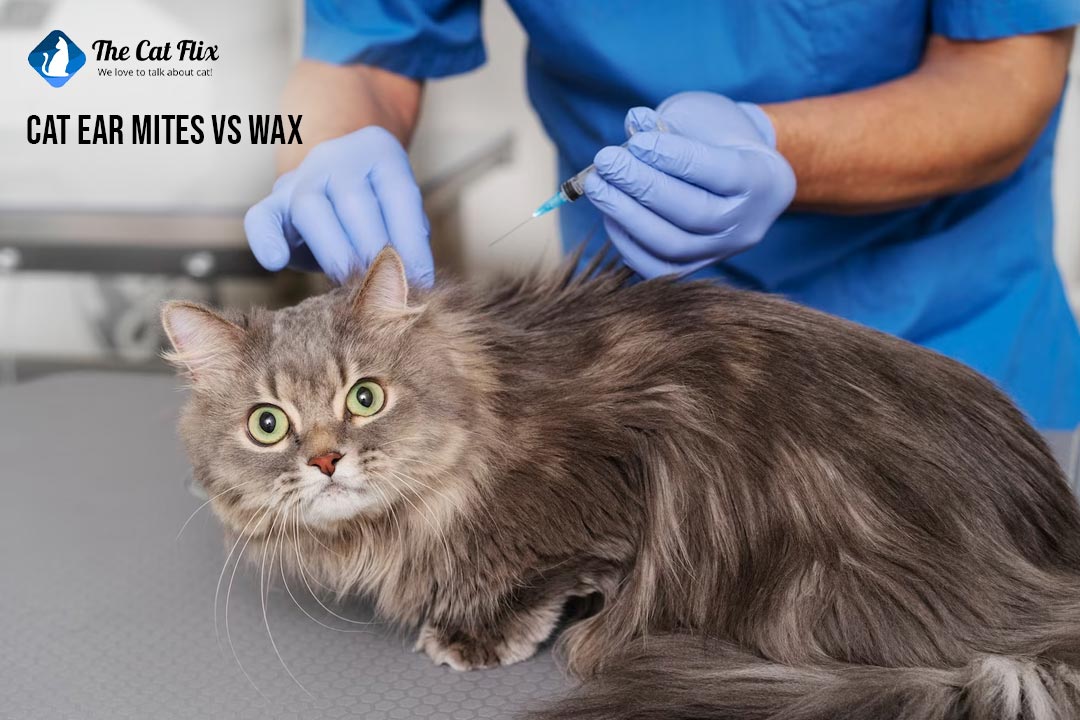Having a cat as a pet doesn’t only mean cuddling and petting. You have to take good care of their grooming and hygiene needs, including keeping their ears clean and healthy.
Because sometimes those ears can encounter issues that need our attention. Like, infested by ear mites and ear wax buildup.
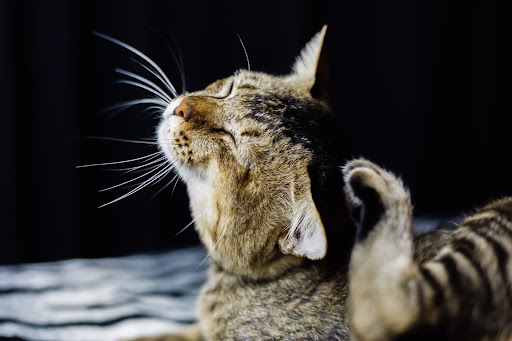
Understanding the difference between these two ear issues is crucial for ensuring a cat’s well-being. Let’s have some insights of “Cat Ear Mites Vs Wax” and learn how to recognize, treat, and prevent these issues.
Understanding Ear Mites
What Are Mites In Cats Ears?
Mites – these tiny troublemakers live in the ears of cats and other animals. They feed on the skin and wax inside the ear canal, causing inflammation, irritation, and infection.
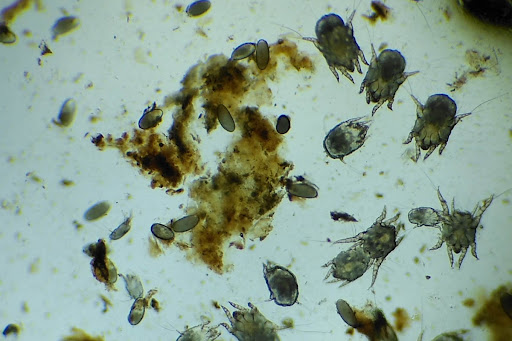
The most common type of mite that affects cats is Otodectes Cynotis, also known as the ear mite. These parasites are very small and can be hard to see with the naked eye. They look like white or gray specks that move around in the ear.
And yes, ear mites can cause bald patches in cats’ skin, especially around the ears and head.
How Do Cats Get Ear Mites?
Ear mites are highly contagious. These can spread easily from one cat to another in the household. Like through direct contact or shared bedding.
Ear mites can also be picked up from the environment, especially if the cat goes outside and interacts with other cats or wildlife.
Mite infestation is more common in young cats. Especially those that live in crowded or unsanitary conditions. However, cats of any age can get ear mites if they come in contact with an infected animal.
What Are The Symptoms of Ear Mites In Cats?
If you are wondering about the symptoms of mites in cats ears, then look for-
- Excessive scratching or rubbing of the ears
- Shaking or tilting of the head
- Dark brown or black discharge/wax from the ears (looks like coffee grounds)
- Crusty or scaly skin around the ears
- Redness or swelling of the ear canal
- Foul odor from the ears
- Hearing loss or balance problems (in severe cases)
Ear mites can cause a lot of discomfort, inflammation, and pain for your cat. Also, it can damage their ears and hearing. If left untreated, it can lead to secondary bacterial or fungal infections, which can be more serious and harder to treat.
Identifying Ear Wax
What Is Ear Wax in Cats?
Ear wax, also known as cerumen, is a natural substance produced by the glands in the ear canal of cats. It’s composed of dead skin cells, oils, and bacteria.
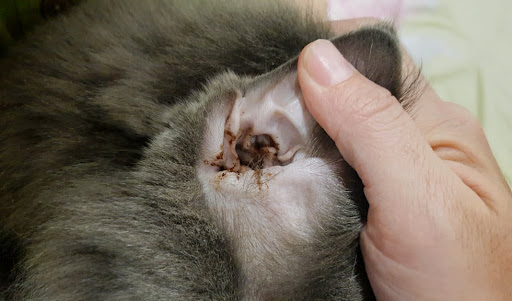
Normally, wax helps cats to protect the ear canal from foreign objects, moisture, and infections. It looks like a light brownish color and has a sticky consistency.
What Causes of Ear Wax Buildup?
Having ear wax is normal for cats. But ear wax buildup can be caused due to excessive hair in ear, infections, ear mites.
Sometimes, foreign objects like grass seeds, dirt, or other objects get stuck in their ears. This can block the ear canal and cause wax buildup.
Allergic reactions to certain foods, pollen, or other substances can cause inflammation and increased wax production in the ear canal of cats.
Difference Between Normal Ear Wax and Infected Ear Wax
As we said, normal ear wax is usually a light brownish color. It should not have a strong odor or cause any discomfort for your cat.
On the other hand, infected ear wax looks dark brown or black color. Sometimes it may look white or yellow if your cat has a bacterial or fungal infection in his ears.
Furthermore, if ear wax seems kind of red or bloody, it may indicate that your cat has an injury or ulceration in his ears.
Along with color, infected wax can produce bad smell, as it can be caused by mites’ infestation.
How Do You Tell If Your Cat Has Ear Mites or Just Dirty Ears?
It can be a little hard to differentiate dirty cat ears and ear mites. And tell me who always carries a microscope to examine a cat’s ears? It’s not possible, right?
For that, I have some clues that can work as a ‘human-eye microscope’ and help you identify the difference between ear mites and just dirty ears.
- Look at the color and texture of the ear wax. Just dirty ears will have brown wax, and mite-infected ears will have dark or black wax.
- Check the inside of the ear closely. You may also see some white specks, moving around in the ear.
- Smell the ears. Odorless ears tell you there’s nothing to worry about, yet. But bad odor will make it clear that your cat ear is infected by those tiny mites, helping to grow bacteria and fungi.
- Observe your cat’s behavior. Any infection, including mites, in the ear will cause discomfort, severe itching, irritation, and pain. They can twitch their ears rapidly, or be more sensitive to touch around it.
- Look for other symptoms. Like redness, swelling, crustiness, or scaly skin. It means mites are already infested inside your cat’s ears. If you see pus, blood, discharge, then it definitely signs of secondary bacterial or fungal infections.
How To Know the Difference: Is it Ear Mites or Ear Wax?
So, how to tell if your cat has ear mites or just ear wax? Well, there are some key differences that can help you identify the problem-

| Ear Mites | Ear wax |
| Visible specks or parasites in the ear’s hair, or skin. | Natural ear canal substance |
| Continuously scratching ear, or tilting head | No sign of itchiness |
| Dark or black discharge | Brown waxy discharge |
| Twitching or lowering ear | Normal movement of ears |
| Constantly meowing loudly, or yowling. | No sign of discomfort |
What Should You Do If Your Cat Has Ear Mites or Infected Wax ?
If you suspect that your little kitty has ear mites or wax in their ear then try to treat it at home first. Like normal cleaning, applying home remedies, if it’s not that serious condition.
How Can You Treat Cat’s Ear Mites or Ear Wax At Home?
The first thing you should do is inspect their ears carefully. You can use a flashlight to help you see better.
If you see any of these signs, you should clean your cat’s ears gently with a cotton ball and a suitable ear cleaner.
You can make your own at home using natural ingredients, or you can buy a commercial ear cleaner for cats from a pet store or online.
Some of them are Vetoquinol, Dechra EpiKlean, Zymox. But it’s better to take your vet advice before purchasing them and apply.
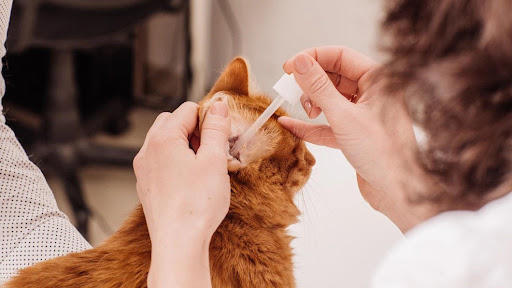
For mild cases, cleaning your cat’s ears at home need some steps:
- Prepare the ear cleaner. You can use a commercial one or make your own using natural ingredients. Make sure to use only fresh and clean ingredients and store the ear cleaner in a sterile container.
- Warm up the ear cleaner. You can do this by placing the container in a bowl of warm water for a few minutes. But not too hot or too cold. Because this can hurt your cat’s ears. The ideal temperature is around body temperature or slightly warmer.
- Hold your cat securely. You may need someone to help you with this step, especially if your cat is not used to having their ears cleaned.
You can wrap your cat in a towel or blanket to prevent them from scratching or biting you. Also, use a treat or toy to distract your cat and make them more comfortable.
- Apply the ear cleaner into the ear canal. You can use a dropper, a syringe, or a spray bottle to do this. Gently lift your cat’s ear flap and insert the tip of the applicator into the opening of the ear canal.
Do not push it too deep, as this can damage the eardrum. Squeeze or spray a small amount of the ear cleaner into the ear canal and massage the base of the ear gently.
- Wipe away the excess ear cleaner and debris. You can use a cotton ball or a gauze pad to do this. Gently wipe the inside of the ear flap and the opening of the ear canal.
Do not use cotton swabs or anything else that can push the wax or debris deeper into the ear canal or damage the eardrum.
- Repeat the process for the other ear. Make sure to use a fresh cotton ball or gauze pad and clean applicator for each ear to prevent cross-contamination.
Apart from mites or wax, you can also have ringworm in their skin. So, read this article to learn: how to bathe a cat with ringworm.
Home Remedies For Cat’s Ear Mites or Wax
- Apple cider vinegar: A natural antiseptic and anti-inflammatory agent that can help kill bacteria and fungi in the ear canal.
You can dilute it with water in a 1:1 ratio and spray it into your cat’s ears once or twice a day.
- Mineral oil: A lubricant that can help soften and remove excess wax and debris from the ear canal. You can apply a few drops of mineral oil into your cat’s ears and massage gently with a cotton ball.
- Coconut oil: A natural moisturizer and antibacterial agent. Helps soothe and heal irritated skin in the ear canal. You can melt some coconut oil and apply it into your cat’s ears with a dropper or a cotton pad.
- Garlic: A natural antibiotic and antiparasitic agent that can help kill ear mites and prevent infections. You can crush some garlic cloves and soak them in olive oil for several hours.
Then strain the oil and apply a few drops into your cat’s ears once or twice a day.
- Vaseline: A petroleum jelly that can help smother and suffocate ear mites and remove wax. You can apply a small amount of Vaseline into your cat’s ears and massage gently with a cotton ball.
- Aloe vera: A natural soothing and healing agent that can help reduce inflammation and irritation in the ear canal. You can extract some fresh gel from an aloe vera leaf and apply it into your cat’s ears with cotton.
When To Seek Vet’s Help
While home remedies can be helpful for mild cases of ear mites or wax, they may not be enough for severe or chronic cases. Like, the infections continue to increase. Along with redness, swelling, or crustiness, there are signs of bleeding from the ears.
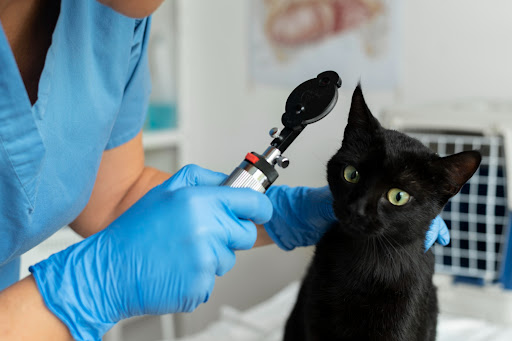
In short, when you notice any infection, seek vet help at the early stage. ASAP treatment will prevent your cat from having hearing loss or balance problems.
Follow your vet’s instructions, advice on how to administer the prescribed medication and how often to bring your cat for follow-up visits.
How To Prevent These Common Cat Ear Issues
It is important to prevent these common cat ear issues by taking good care of your cat’s ears and health. Here are some tips on how to prevent these common cat ear issues:
- Check your cat’s ears regularly if there is any odor, dark wax, or redness.
- Clean your cat’s ears often with a suitable ear cleaner.
- Use antiparasitic treatments to prevent ear mites (topical, oral, or injectable).
- Keep your cat’s environment clean and avoid contact with infected animals.
- Provide your cat with a healthy diet and plenty of fresh water.
- Seek veterinary help if needed.
Also read ⇾ how to get rid of fleas on long haired cats
Conclusion
Understanding the differences between cat ear mites and wax is crucial for responsible cat ownership. Ear mites are pesky parasites that require prompt treatment.
And wax is a natural part of ear health that should be managed to prevent excessive buildup. By recognizing the symptoms and addressing these issues, you can ensure the well-being of your feline companion.
Remember, when in doubt, always consult your veterinarian for professional guidance on your cat’s ear health.

